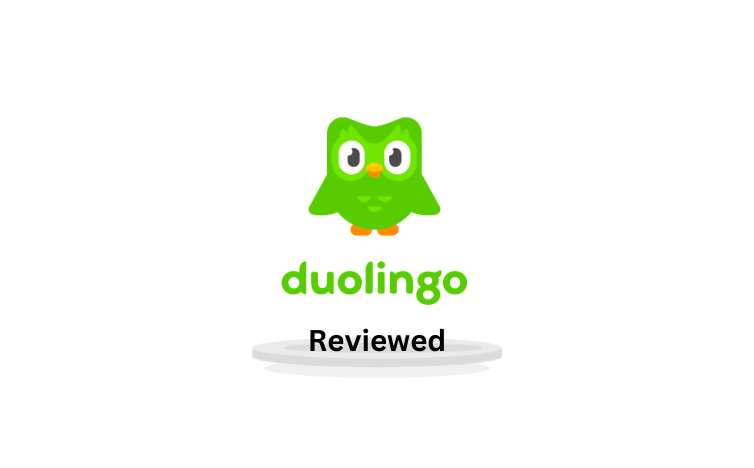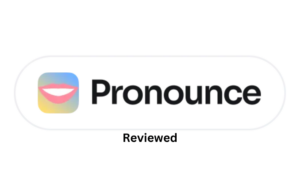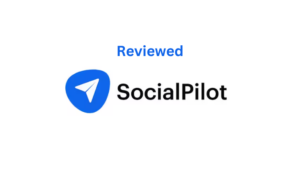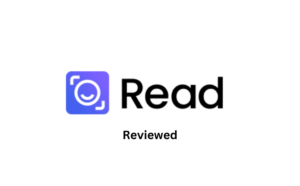If you’re a language learner or someone who loves exploring educational apps, you’ve likely heard of Duolingo. With its promise of making language learning fun, intuitive, and accessible, many wonder, “Can I really reach 100% fluency with Duolingo?” Here’s a detailed Duolingo review of my experience with the app.
Table of Contents
What is Duolingo?
Duolingo, launched in 2012 by Luis von Ahn and Severin Hacker at Carnegie Mellon University, is a language learning app designed to make learning free and fun for everyone.
The app offers courses in more than 40 languages, from popular ones like English, Spanish, and French to unique options like Welsh and Navajo. It’s available on both mobile and desktop, making it easy to use from anywhere in the world.
With over 100 million active users each month, Duolingo is the world’s most popular language-learning app. Users complete billions of translation exercises weekly, showing how engaging and effective it is for regular practice.
The Duolingo Experience
Duolingo is one of the most popular language learning apps, boasting a user-friendly interface and gamified lessons designed to make learning a new language feel less like a chore. Here’s what you can expect:
Key Features of Duolingo
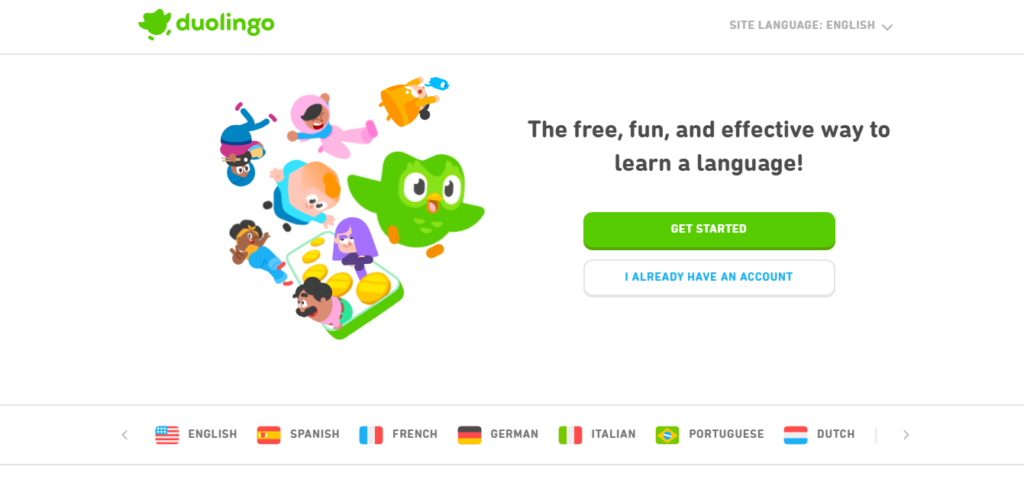
Gamified Learning Experience
Duolingo’s most notable feature is its game-like approach to language learning. The app adopts a reward system where users earn points for completing lessons, correct answers, and daily practice. Streaks are awarded for consecutive days of study, encouraging regular engagement. Timed challenges add an element of excitement and pressure to improve speed and accuracy in answers, making the learning process dynamic and interactive.
See Also: 10 Best AI Tools For Education
Wide Range of Languages
Duolingo offers an impressive selection of over 40 languages, including widely spoken ones like Spanish, French, and German, as well as less commonly studied languages like Welsh, Swahili, and Hawaiian. This diversity caters to a broad array of language interests and learning goals.
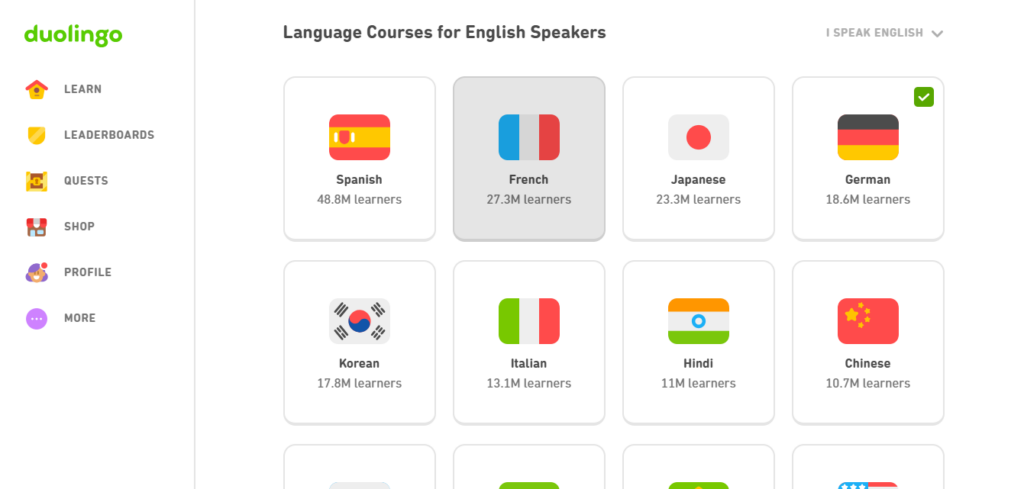
Bite-Sized Lessons
One of Duolingo’s strengths is its accessibility in terms of time commitment. Lessons are concise, typically taking only a few minutes to complete. This approach is ideal for learners with busy schedules, as it allows for learning in short, manageable sessions that can fit into any part of the day.
Interactive Interfaces
Duolingo’s interface is vibrant and engaging, featuring colorful characters and interactive exercises that appeal to a wide audience, from children to adults. Users participate in listening, speaking, reading, and writing exercises that are designed to create a comprehensive language learning environment, balanced across various aspects of language acquisition.
Community and Support System
The platform encourages social interaction through leaderboards, where learners can compete with friends and global users to maintain their positions and earn rewards. This aspect fosters a sense of community and motivation, as users can participate in forums to share tips and help each other.
See Also: 8 Best AI Personal Assistants
Organized Lessons
Duolingo’s lessons are structured to help you advance through levels as you learn new skills. Lessons are broken into small, easy parts, making it simple to fit learning into your day. The app regularly revisits older material to reinforce what you’ve learned.
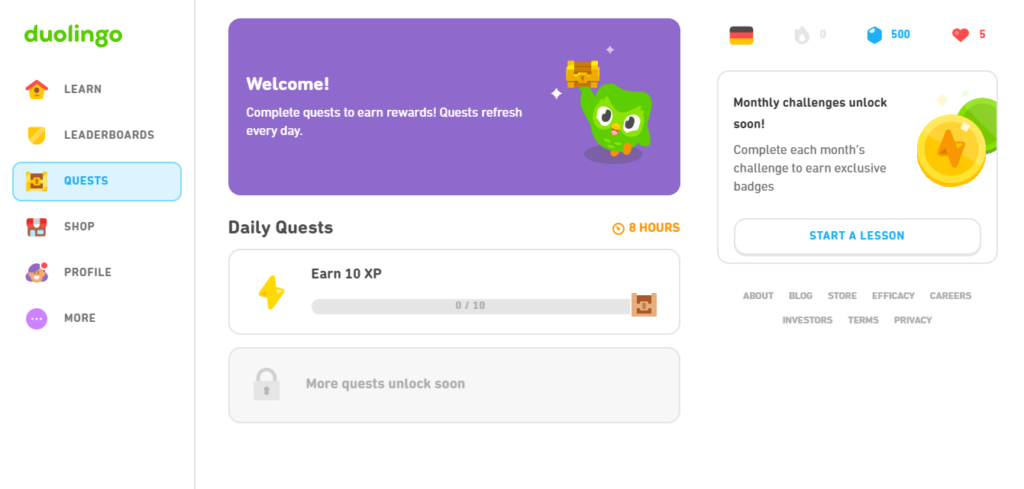
Personalized Practice
Duolingo adapts practice to your needs with the Practice Hub, focusing on areas you find challenging, and Unit Rewind, reminding you to review past lessons when needed.
Duolingo Stories
Duolingo Stories are short, interactive stories designed to help you practice reading and listening skills in your target language. They use vocabulary you’ve already learned, so you can understand the context without needing English translations. They help improve comprehension in a fun, engaging way.
Super Duolingo
The premium version provides extra features like no ads, unlimited mistakes (hearts), and access to Legendary Challenges for advanced quizzes.
Speech Recognition
Duolingo’s Speech Recognition feature listens to how you say words and gives feedback on your pronunciation. It helps you practice speaking and get better at saying words correctly.
Mobile-Friendly
Duolingo is mobile-friendly, meaning you can use the app on your phone or tablet. This makes it easy to learn anytime, anywhere, whether you’re at home or on the go.
See Also: 10 Best AI Tools For Kids
Skill Tree
The Skill Tree in Duolingo shows your progress as you learn. Each lesson is a part of the tree, and when you finish it, it lights up. It helps you see what you’ve learned and what’s coming ne
Daily Goals
Duolingo’s Daily Goals set a target for how much you should practice each day, like 5, 10, or 20 minutes. It helps you stay on track and makes sure you keep learning regularly. Reaching your goal each day keeps you motivated.
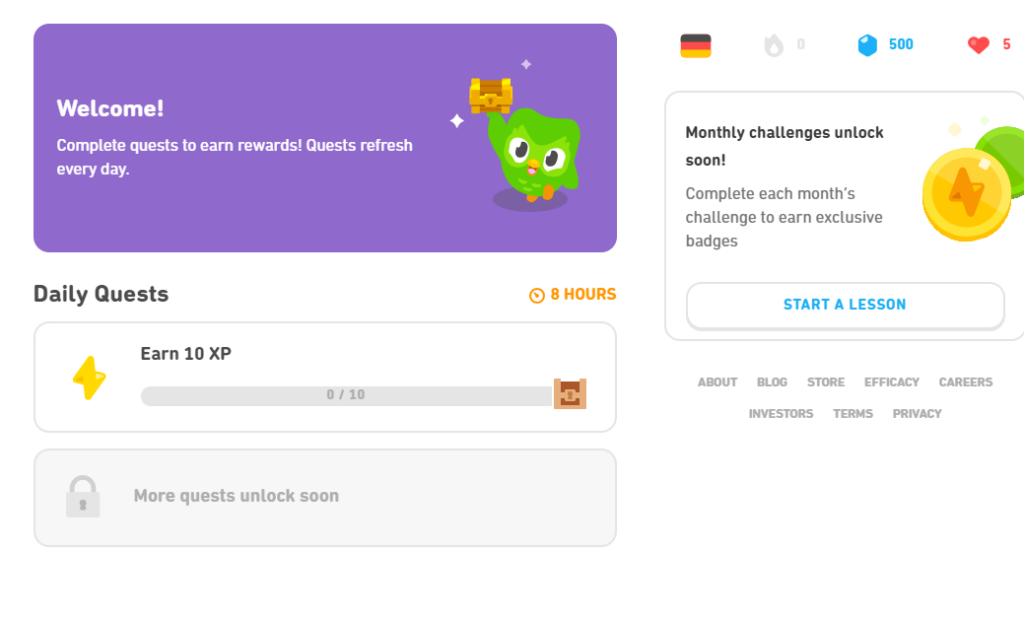
Offline Mode
Duolingo’s Offline Mode lets you download lessons to your device, so you can continue learning without an internet connection. It’s perfect for studying on the go or in places with no Wi-Fi. You can access downloaded lessons anytime, keeping your learning on track.
Duolingo English Test
The Duolingo English Test is an online test that measures your English skills. It’s used by schools and employers to assess your reading, writing, speaking, and listening abilities. The test is taken at home, is quick (about an hour), and you get results within a few days.
Each of these features plays a critical role in making Duolingo a popular choice for language learners worldwide, providing a enjoyable and effective approach to language acquisition.
Pros and Cons
Who Benefits Most from Duolingo?
Duolingo is great for:
- New Learners: People just starting with a language, as it covers basic words and grammar.
- Casual Users: Those who enjoy short, daily lessons with a game-like feel.
- Busy People: Anyone who needs quick, flexible lessons they can fit into their day.
- Travelers: People wanting to learn useful phrases before a trip.
- Language Explorers: Those interested in trying out different languages without a big commitment.
- Budget-Friendly: People looking for a free or low-cost way to learn.
- Basic Skills: Learners wanting to build a simple foundation before moving to harder material.
It’s less suited for advanced learners or those needing more real-life language practice.
Can You Achieve 100% Fluency?
The million-dollar question—is Duolingo enough to become fluent? From my experience, Duolingo is an excellent starting point, especially for beginners. It provides a solid foundation of basic vocabulary and phrases. However, to reach full fluency, you’ll need to incorporate additional resources such as speaking with native speakers, engaging with media in the target language, and perhaps formal education.
How Duolingo Works
Duolingo employs a structured methodology that leverages the science of learning. At its core, the app uses spaced repetition, a technique that helps users retain information by reviewing content at gradually increasing intervals. New lessons introduce vocabulary and grammatical structures through simple exercises, while subsequent activities reinforce and expand upon this knowledge. Each lesson is crafted to balance key components of language acquisition—listening, speaking, reading, and writing—ensuring a well-rounded learning experience. The app’s algorithm tracks performance and adapts lesson difficulty accordingly, providing personalized feedback to guide learners through their individual language journeys. These mechanisms combine to create an engaging and effective learning environment.
See Also: 6 Best AI Tools For Teachers
Conclusion
Duolingo is a fantastic tool for language learners of all levels. It’s fun, accessible, and free, making it a no-brainer for anyone looking to dip their toes into a new language. However, achieving complete fluency will require more than just daily Duolingo sessions. Use it as part of a broader language-learning strategy, and you’ll find yourself making significant progress.
For language enthusiasts and app lovers alike, Duolingo is a worthwhile addition to your learning toolkit.
FAQs
Is Duolingo really free to use?
Yes, Duolingo offers a free version that includes core language learning features. There is also a paid subscription, Duolingo Plus, which provides additional features such as an ad-free experience and offline access.
Can I learn multiple languages at the same time on Duolingo?
Yes, users can learn more than one language simultaneously on Duolingo. It’s easy to switch between courses within the app.
How effective is Duolingo for advanced learners?
Duolingo is primarily geared towards beginners and intermediate learners, offering a strong foundation in vocabulary and basic grammar. Advanced learners might find it beneficial as a supplementary resource to reinforce learned skills.
Does Duolingo offer cultural context with its language courses?
Duolingo focuses on language acquisition rather than cultural education. While some cultural context is included in lessons, exploring additional resources is recommended for a deeper understanding of cultural nuances.
How does Duolingo measure fluency?
Duolingo uses a subjective algorithm to assess language proficiency, which is termed fluency within the app. However, users should consider it as a progress marker rather than a true fluency indicator.

